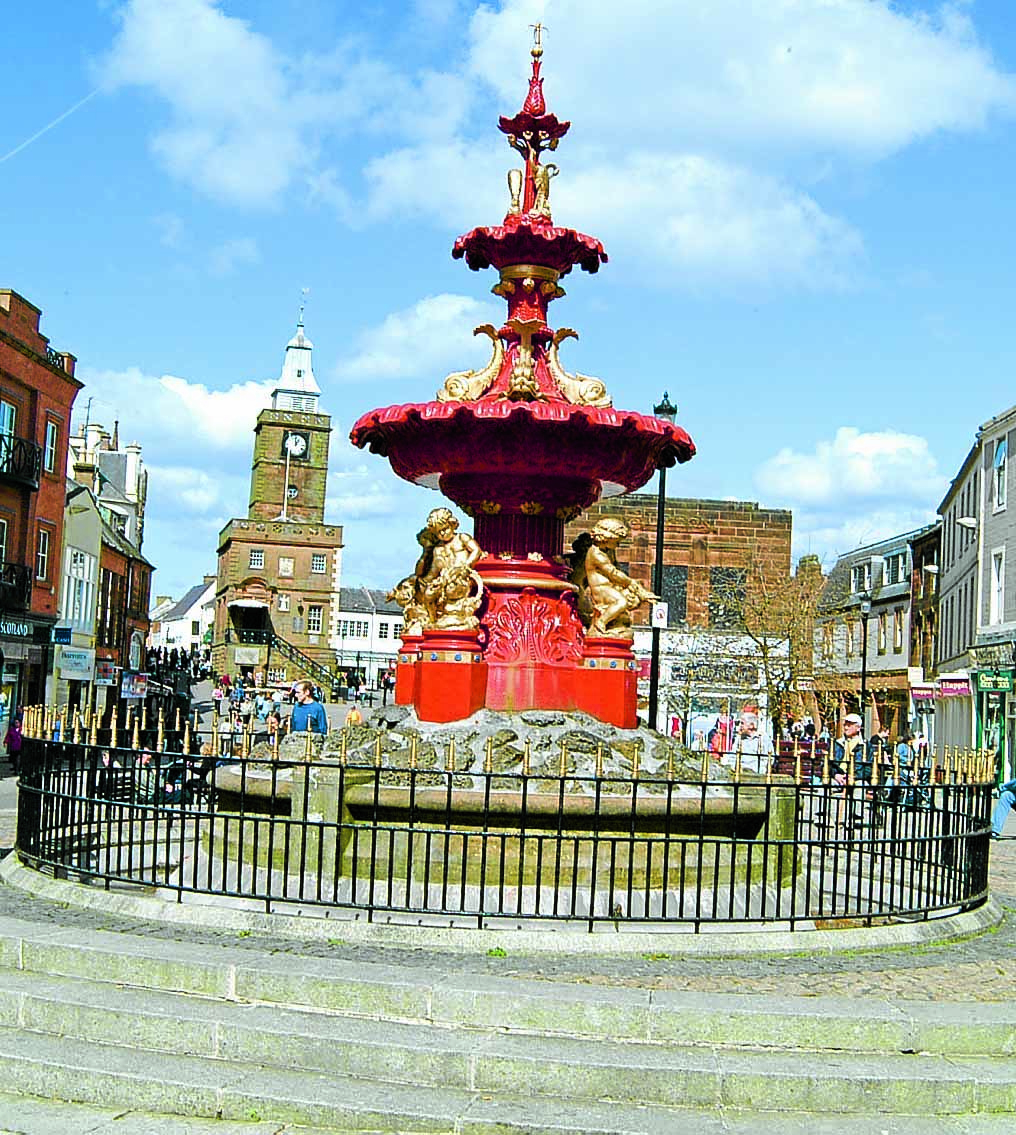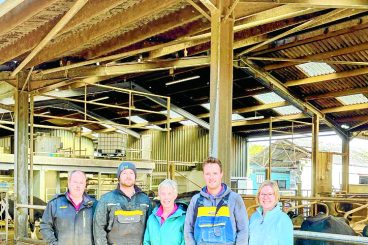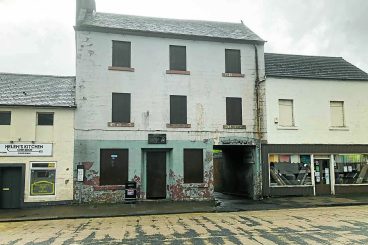This comes after revised refurbishment plans were put forward to have the historic town centrepiece spruced up and restored to working order.
Following a long, drawn-out affair, these updated proposals have taken the concerns of councillors and members of the public into account.
Controversial plans for an art installation and new public benches that were branded “inappropriate” for the town centre conservation area have now been ditched.
A revised planning application will now go before Dumfries and Galloway Council’s planning committee next Wednesday, recommending that the fountain upgrade is approved.
A report to be tabled at the meeting reads: “The current application, for an amended proposal, seeks planning permission for the alterations to the fountain only.
“The proposed alterations include the removal of the non-original ‘rockery’ elements to reveal the original sandstone inner bowl and pedestal, the reinstatement of the four missing cast iron urns with ‘aloe vera’ plants replicated in patinated copper, together with the reinstatement of the water circulating system and the repainting and regilding of the fountain to reflect the original colours.
“The fountain would require to be fully dismantled and taken off site in order that the conservation and restoration works can be undertaken within a controlled environment before being reinstated.”
The fountain – reportedly one of only two of its type in the world – marks its 140th anniversary this year.
It was unveiled in 1882 to mark the supply of drinking water to the town following two deadly cholera outbreaks.
Currently in poor condition and not in working order, the restoration works would return the fountain to a unique historic landmark the town can be proud of.
However, the proposal involves the dismantling of the B-listed fountain for repairs off-site before reinstatement, and this also involves careful archaeological work.
The council report states: “As part of the works to reinstate the water circulation system, a new inspection chamber is required which will involve down-cutting works.
“Given the development would be located in an area of significant historical activity, there is the possibility of archaeological or historical finds being uncovered.
“As a result, the council archaeologist recommends a condition be attached to any permission granted which would require a watching brief to monitor all down-cutting works within the site.”
The original plans, including the installation of artwork and new public benches, were estimated to cost £400,000 and this sparked a furious reaction from some members of the public. It is unclear how much the project will cost excluding the artwork element.
At next week’s planning committee, councillors are being asked to approve the fountain restoration plans – with the condition that no works will go ahead until all necessary archaeological work has been done.























